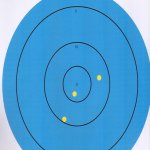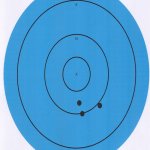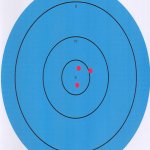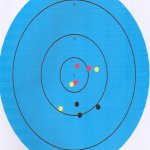Apologies if this has been done before but a quick search did not reveal an answer to my question and life is only so long to be going through countless pages of threads.
I am new here and still trying to figure out what is kosher so if this is the wrong forum please let me know and I will ask to move/delete it.
I was testing out some factory ammo today 168 v 175 grain from a rem 700 @100m. Been slowly getting into long range shooting and my reading has not revealed an answer to this question. Pictured below are two groups I shot. On both there is an obvious "flyer" but I would not have called it at the bench which I think means it would count in a competition if I am not mistaken. Outside of competitions though would you, personally, include the flyer as part of your group for your own stats or would you measure the group best 4/5. I'm not asking to pad my ego and claim I have a better group than what I do it is more about stats. In science at university we would automatically remove any outlier that is within 2 standard deviations from the rest of the data set. Is that something that is typically done in shooting? Just want to be speaking the same language as everyone else essentially.
Thank you for your replies.
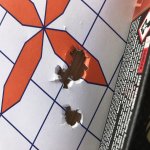
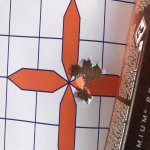
I am new here and still trying to figure out what is kosher so if this is the wrong forum please let me know and I will ask to move/delete it.
I was testing out some factory ammo today 168 v 175 grain from a rem 700 @100m. Been slowly getting into long range shooting and my reading has not revealed an answer to this question. Pictured below are two groups I shot. On both there is an obvious "flyer" but I would not have called it at the bench which I think means it would count in a competition if I am not mistaken. Outside of competitions though would you, personally, include the flyer as part of your group for your own stats or would you measure the group best 4/5. I'm not asking to pad my ego and claim I have a better group than what I do it is more about stats. In science at university we would automatically remove any outlier that is within 2 standard deviations from the rest of the data set. Is that something that is typically done in shooting? Just want to be speaking the same language as everyone else essentially.
Thank you for your replies.



















































